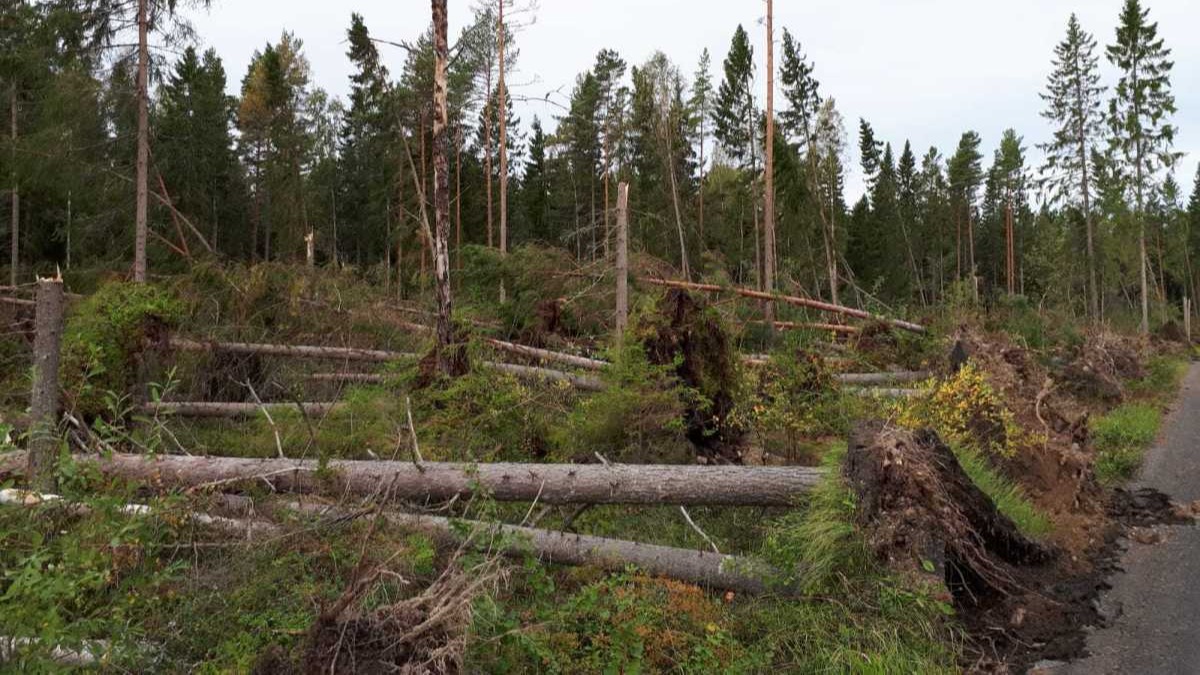Winds and the number of windstorms have not increased in northern Europe and Finland

Windstorms are strong extratropical cyclones that can cause extensive damage to the society. Winds additionally affect many sectors, such as wind energy and forestry. It is important to be able to prepare to wind speeds and windstorms on a daily basis and in the long term. In the dissertation, the climatological characteristics, structural development of windstorms and meteorological factors affecting windstorm intensity were studied. The results show that the wind speeds and the number of windstorms change largely between years without significant long-term trends. In addition, the wind speeds and the number of windstorms change seasonally. ”The winds in northern Europe blow up to 30 % stronger in winter than in summer. While in winter there are typically 5–6 windstorms per month, during summer months there are on average none,” says research scientist Terhi Laurila. Although the seasonal variation in windstorms i.e. strong extratropical cyclones was found, this variation was not seen in the number of all extratropical cyclones.
Cold-season windstorms are stronger than warm-season windstorms
The dissertation investigated the typical structure of windstorms and how the strong wind gusts develop. The wind gusts were found to be at their strongest around at the same as the minimum pressure of the windstorm occurs. The region of strongest gusts moves and extends during the windstorm development from the warm sector to behind the cold front. The research examined the cold- and warm-season windstorms separately. By comparing the seasons, it was discovered that cold-season windstorms from October to March are typically stronger and spatially larger than warm-season windstorms from April to October. The dissertation also examined an in-depth case study on storm Mauri (22nd of September 1982) and its meteorological development. The investigation showed that the evolution of storm Mauri was complex and diverged from the typical development path. Therefore, the results from the dissertation highlight that better understanding on windstorm development is gained when investigating both the typical development concepts and individual case studies.
Low-level horizontal temperature difference the most important factor regarding the windstorm intensity
The impact of meteorological factors to the windstorm intensity was analysed with a so-called ensemble sensitivity method. The higher the sensitivity, the stronger connection between the investigated factor and windstorm intensity. The results show that from all investigated factors the low-level horizontal temperature difference has the strongest impact on the windstorm intensity. Hence, this is an important variable when forecasting the windstorm intensity. The results additionally showed that the sensitivities are higher in cold-season windstorms than in warm-season windstorms regarding all investigated factors, such as the horizontal temperature difference and the location of a jet stream. ”This may indicate that windstorms are better predictable in the cold season than in the warm season,” Terhi Laurila explains.
Public examination on 2nd of June 2022 at the University of Helsinki
The doctoral dissertation of Terhi Laurila, titled ”Winds and windstorms in northern Europe and Finland”, is examined on Thursday 2nd of June 2022 at 1 o’clock in the afternoon. The examination is held in Kumpula campus, Physicum building (A.I. Virtasen aukio 1, Helsinki), auditorium E204. The opponent is Professor Joaquim Pinto from the Karlsruhe Institute of Technology and the custos is Docent Victoria Sinclair from the University of Helsinki. The public examination can also be followed online. Follow the live stream.
Further information
Research scientist Terhi Laurila, Finnish Meteorological Institute, tel. +358 50 4648812, terhi.laurila@fmi.fi Dissertation is available on Helda digital archive.
